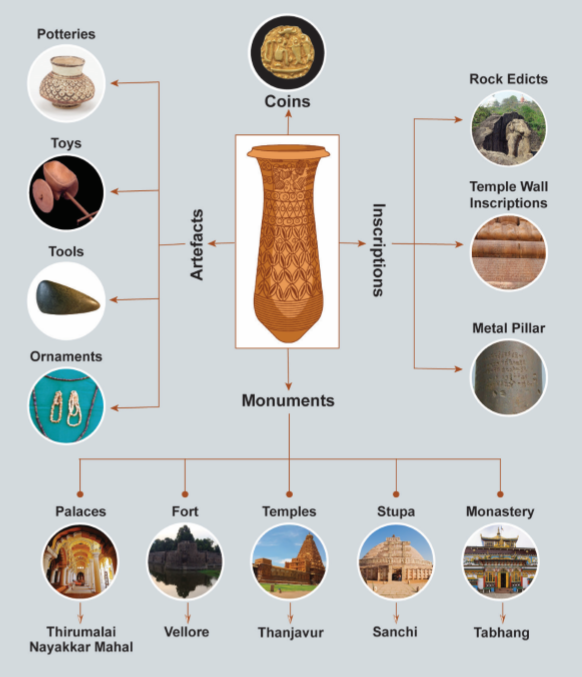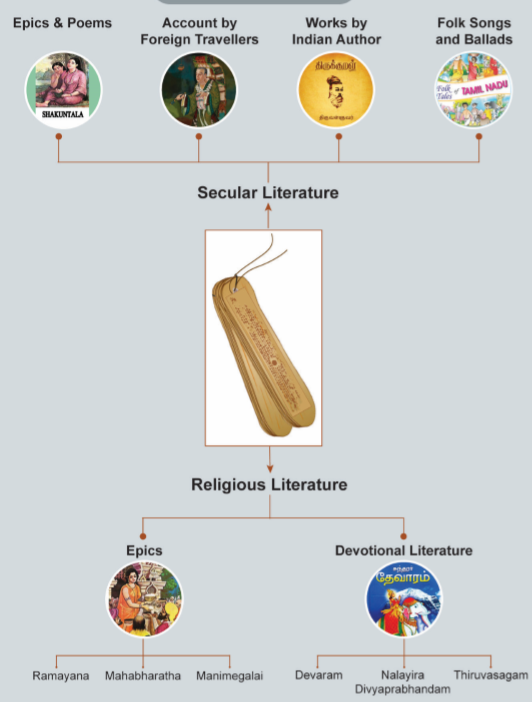What is History Notes 6th Social Science
What is History Notes 6th Social Science
6th Social Science Lesson 1 Notes in English
1. What is History?
1. Time in history is calculated in years using BCE/CE, which stands for Before Common Era / Common Era.
2. History is the study of past events in chronological order.
3. Where does the word history derive from?
The term history has been derived from the Greek word “Istoria” which means ‘learning by enquiry’.
4. What are called Rock Paintings?
In ancient period, the people lived in caves, used to draw paintings in rocks called Rock Painting. They might have wished to record their activities through these paintings.
5. Numismatics – The study of Coins. Epigraphy– The study of inscription.
6. What is Pre Historic Period?
The period between the use of first stone tools and the invention of writing systems is prehistory. Stone tools, excavated materials and rock paintings are the major sources of pre-history.
6th Social Book Back Questions
7. Illustrate the Archeological sources of India?

8. Illustrate the literary sources of India?

9. What does the word Dhamma mean?
‘Dhamma’ is the prakrit word for the sanskrit term ‘dharma’, which means religious duty.
10. Dharma Chakra with 24 spokes in our national flag was taken from Saranath Pillar of Ashoka.
11. Do you know what proto history is?
The period for which records in writing are available but not yet deciphered is called proto history.
12. Which animal was used for domestication?
They started domesticating dogs for their protection and hunting activities.
13. During whose period does Buddhism spread to Asia?
The most famous ruler of ancient India was Emperor Ashoka. It was during his period that Buddhism spread to different parts of Asia.
14. Who embraced Buddhism and then devoted his life to spread the message of peace and dharma?
Ashoka
15. Who was the first to build hospitals for Animals?
Ashoka
16. Who provide material evidence for the greatness of Ashoka?
The material evidence provided by William Jones, James Prinsep and Alexander Cunningham revealed the greatness of Emperor Ashoka.
17. Which Book provided the comprehensive account of Ashoka?
Based on these accounts, Charles Allen wrote a book titled “The Search for the India’s Lost Emperor”, which provided a comprehensive account of Ashoka.
18. Which Inscriptions provide the greatness of Ashoka?
The inscriptions observed on the rocks, Sanchi Stupa and Saranath Pillar and helped to understand the greatness of Ashoka to the world.
19. Some Major Indian Excavation Sites:
1. Paleolithic: Athirambakkam, Hunasagi – Valley, Bimbetka.
2. Neolithic: Mehrgarh, Burzahom, Koldihwa, Mahgara, Chirand, Daojali Hading, Brahmagiri, Paiyampalli
3. Iron Age: Hallur
4. Bronze Age: Adichanallur, Lothal.